The low altitude economy encompasses all commercial activities conducted in airspace typically below 1,000 meters, though operations can extend up to 3,000-4,000 meters depending on specific applications and regulatory frameworks. The Chinese government has positioned the low altitude economy as a national priority, recognizing its potential to address urban mobility challenges while creating unprecedented economic opportunities across multiple industries .
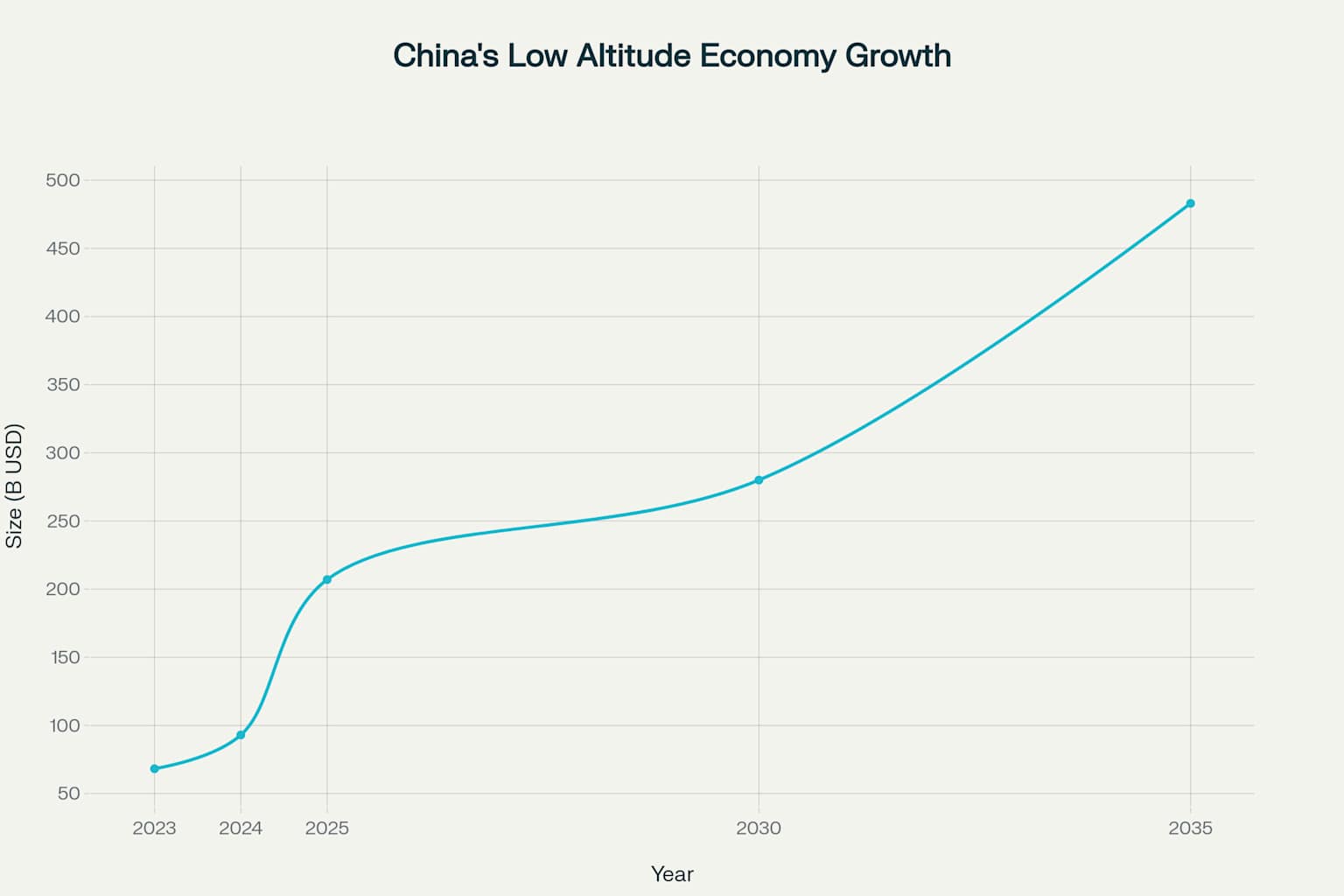 China's low altitude economy market growth projection from 2023 to 2035
China's low altitude economy market growth projection from 2023 to 2035
Through comprehensive policy support, streamlined regulations, and coordinated infrastructure development, China has established itself as the undisputed leader in electric vertical takeoff and landing aircraft development and deployment. The results speak for themselves: China now accounts for over 70% of the world's low altitude unmanned aerial vehicle patent applications and hosts more than 50,000 enterprises engaged in related businesses .
At its core, this industry leverages electric vertical takeoff and landing (eVTOL) aircraft to redefine urban transportation, emergency response, and logistics. Below, we examine the top five eVTOL projects driving China’s leadership in this field, analyzing their technical capabilities, regulatory milestones, and market strategies.
EHang Achieves Historic Breakthrough in Commercial Low Altitude Economy Operations
EHang Holdings Limited stands as the most accomplished player in China's low altitude economy, having achieved regulatory milestones that position the company at the forefront of commercial electric vertical takeoff and landing operations worldwide . Founded in 2014 and publicly traded on NASDAQ since December 2019, EHang has focused exclusively on developing autonomous aerial vehicles that can operate safely and efficiently within the low altitude economy framework . 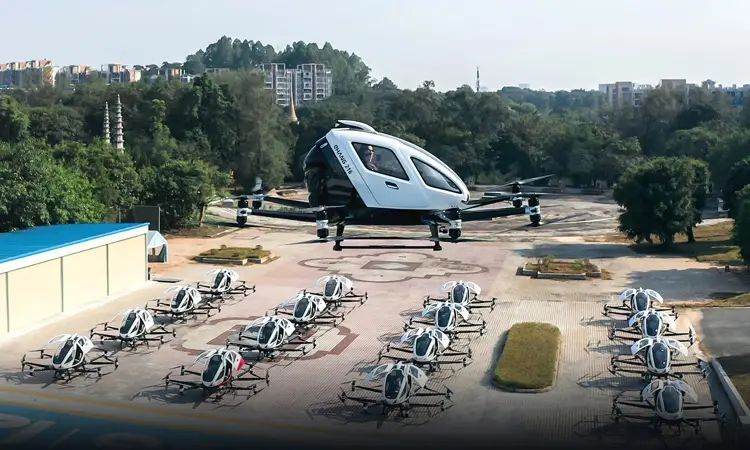 EHang EH216-S eVTOL flying over an urban environment
EHang EH216-S eVTOL flying over an urban environment
The EHang EH216-S represents a breakthrough achievement in low altitude economy applications, designed specifically for autonomous passenger transport operations within urban environments. This multirotor aircraft features 16 propellers arranged across 8 arms with dual motors, providing the redundancy essential for safe operations in the low altitude economy . With a capacity for two passengers and a maximum payload of 220 kilograms, the aircraft achieves cruise speeds of 130 kilometers per hour and can operate for approximately 25 minutes with a range of 35 kilometers .
EHang's regulatory achievements mark a watershed moment for the low altitude economy in China and globally. The company obtained a Type Certificate from the Civil Aviation Administration of China in October 2023, making the EH216-S the world's first passenger-carrying electric vertical takeoff and landing aircraft to receive such certification . This milestone was followed by a Production Certificate in April 2024, enabling mass production, and Standard Airworthiness Certificates for production aircraft . The formal acceptance of Air Operator Certificate applications in July 2024, followed by the actual issuance of certificates in March 2025, established EHang as the first company globally to achieve the full suite of regulatory certifications needed for commercial low altitude economy operations .
The practical deployment of EHang aircraft demonstrates the diverse applications possible within the low altitude economy framework. The company has conducted over 10,000 trial flights across 14 countries, with particular focus on aerial tourism in scenic areas, emergency medical services, urban air mobility demonstrations, and aerial entertainment shows . These operations showcase how the low altitude economy can create new business models while addressing real transportation and service needs in urban and tourist environments .
AutoFlight Advances Long-Range Capabilities for Low Altitude Economy Applications
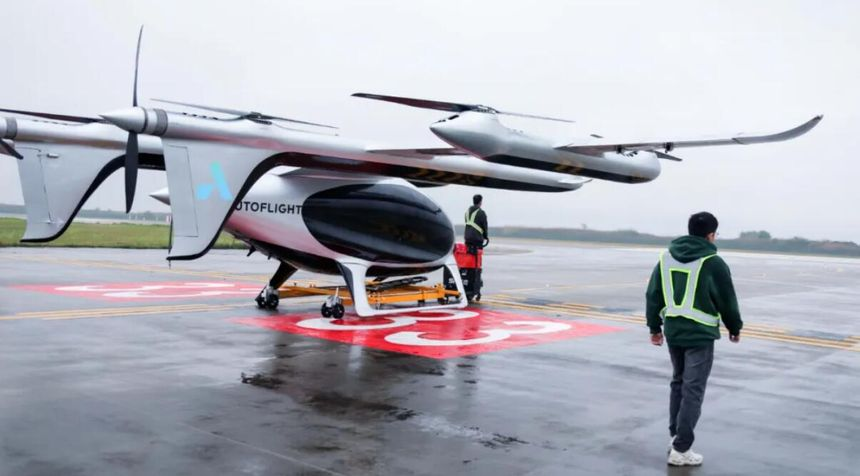
AutoFlight represents another significant advancement in China's low altitude economy development, bringing together experienced aviation leadership and cutting-edge battery technology to address longer-range mission requirements. Founded in 2017 by Tian Yu, who previously established Yuneec, the company combines deep aviation expertise with strategic investment from Contemporary Amperex Technology Co. Limited, China's largest battery manufacturer . This partnership provides the technological foundation necessary for extensive low altitude economy operations that require extended flight capabilities and rapid charging systems .
The Prosperity I aircraft, also designated V2000EM, employs a lift-plus-cruise configuration that optimizes performance for longer-range missions within the low altitude economy framework. This design approach uses dedicated lift rotors for vertical operations and separate propulsion systems for forward flight, enabling the aircraft to achieve cruise speeds of 200 kilometers per hour with a maximum range of 250 kilometers and flight times exceeding 60 minutes. With seating for five occupants including one pilot and four passengers, the Prosperity I addresses the capacity requirements for commercial low altitude economy operations while maintaining the performance characteristics needed for practical inter-city transportation services .
AutoFlight's certification progress demonstrates the structured approach required for establishing credible low altitude economy operations at scale. The company's Type Certificate application was officially accepted by the Civil Aviation Administration of China in April 2024, marking the formal beginning of the certification process for passenger operations . The extensive flight testing program, encompassing over 1,000 test flights, provides the operational data necessary for regulators to evaluate safety and performance within low altitude economy parameters . The prior certification achievements of AutoFlight's CarryAll cargo electric vertical takeoff and landing aircraft in March 2024 established valuable precedents and experience that benefit the passenger aircraft certification process .
Commercial deployment prospects for AutoFlight aircraft illustrate the growing market demand for low altitude economy services across multiple applications. The company delivered its first five-seater Prosperity to a customer in Japan in April 2024 for demonstration purposes, showing international interest in Chinese low altitude economy technology 1. More significantly, AutoFlight secured an order for 12 aircraft from Wuhan's Hanyang District in February 2025 worth $21.5 million, representing one of the first substantial commercial contracts for electric vertical takeoff and landing aircraft in China's domestic low altitude economy market.
TCab Tech Push High-Performance Boundaries
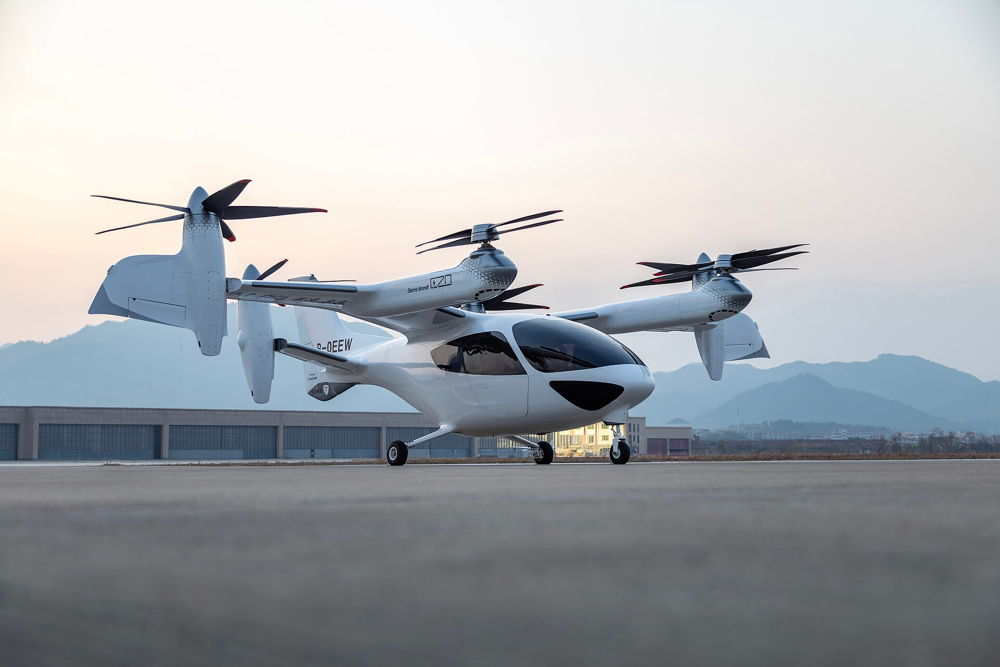
Shanghai TCab Technology Co., Ltd. emerged as a significant player in China's low altitude economy with a focus on high-performance tiltrotor technology that maximizes cruise efficiency for demanding applications. Founded in 2021 by aerospace engineers with major aviation company experience, TCab Tech has rapidly advanced through multiple funding rounds, including a Series B+ round in 2025 that accelerated commercialization efforts for low altitude economy applications . The E20 aircraft represents an advanced approach to low altitude economy operations, utilizing tiltrotor design with eight rotors that transition between vertical and horizontal flight modes .
The E20's performance specifications position it among the highest-performing aircraft in China's low altitude economy development, achieving cruise speeds of 260 kilometers per hour, maximum speeds of 320 kilometers per hour, and operational ranges of 200 kilometers . The aircraft incorporates China's first five-blade large-size variable pitch rotor system constructed from high-strength composite materials, demonstrating the technological sophistication emerging within the low altitude economy industry . TCab Tech's achievement of a commercial operation license in April 2025 made the company one of only two alongside EHang authorized for autonomous flying taxi operations in designated pilot zones. 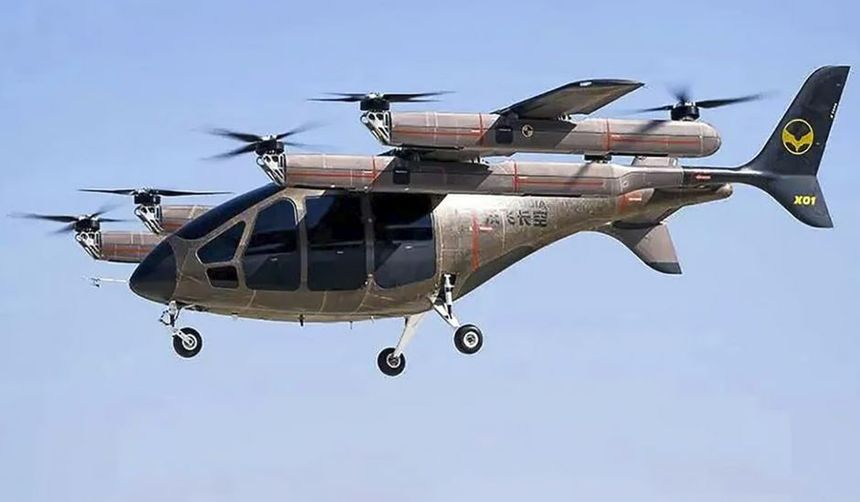
Geely Aerofugia
Geely Aerofugia Technology Co. Ltd., as a subsidiary of Zhejiang Geely Holding Group, brings unique automotive manufacturing expertise to China's low altitude economy development through the integration of automotive and aviation technologies. This approach represents a distinctive strategy for addressing the scalability challenges facing the low altitude economy by leveraging Geely's experience in electric vehicle production and mass manufacturing . The AE200 aircraft showcases the potential for applying automotive manufacturing principles to low altitude economy vehicles, accommodating six occupants including one pilot and five passengers, making it the largest capacity aircraft among the leading Chinese electric vertical takeoff and landing projects .
The AE200's vectored thrust design enables transition between vertical and horizontal flight modes while automotive-grade battery technology from Geely provides the power systems reliability essential for commercial low altitude economy operations . With cruise speeds of 248 kilometers per hour and estimated ranges exceeding 200 kilometers, the AE200 addresses the performance requirements for diverse low altitude economy applications while leveraging Geely's automotive supply chain and manufacturing capabilities. The company's certification progress follows a systematic approach typical of automotive development programs adapted for aviation requirements, with type certification process beginning in April 2023 .
XPeng AeroHT Innovates Modular Approach to Low Altitude Economy Integration

XPeng AeroHT represents a unique approach to the low altitude economy through the development of vehicles that seamlessly integrate ground and air transportation capabilities, bridging traditional automotive and aviation boundaries . As a subsidiary of XPeng Inc., a leading Chinese electric vehicle manufacturer, the company applies automotive technology and design philosophy to create low altitude economy solutions that could reshape personal transportation concepts. The company's modular flying car approach, exemplified by the Land Aircraft Carrier, represents an entirely new category of low altitude economy vehicle that combines electric ground transportation with aerial mobility capabilities .
The Voyager X2 demonstrates the potential for compact, accessible low altitude economy vehicles designed for personal transportation applications within urban environments. This multirotor design with eight propellers accommodates two occupants and achieves maximum speeds of 130 kilometers per hour with flight times of 35 minutes 120. The aircraft's autonomous flight capability with manual override options reflects the company's automotive background in developing user-friendly automated systems for consumer applications . These characteristics position the Voyager X2 for diverse low altitude economy applications including personal transportation, emergency services, and specialized logistics operations in urban areas 20.
XPeng AeroHT's market reception indicates growing consumer interest in accessible low altitude economy transportation solutions that integrate seamlessly with existing ground transportation systems. The company secured 3,000 pre-orders for its modular flying car by early 2025, demonstrating substantial market demand for integrated mobility solutions . The construction of a large manufacturing facility in Guangzhou with expected annual production capacity of 10,000 units shows the company's commitment to scaling low altitude economy vehicle production for mass market adoption . The planned commercial launch in 2026 for under $280,000 targets making low altitude economy transportation accessible to a broader market segment than traditional aviation approaches.
| Company | Aircraft Model | Configuration | Passenger Capacity | Cruise Speed (km/h) | Range (km) | Type Certification Status | Commercial Operations | Key Achievements |
|---|---|---|---|---|---|---|---|---|
| EHang | EH216-S | Multirotor (16 propellers) | 2 | 130 | 35 | Certified (2023) | Active (2025) | World's first eVTOL type certification |
| AutoFlight | Prosperity I (V2000EM) | Lift-plus-cruise | 5 | 200 | 250 | Application Accepted (2024) | Targeting 2026-2027 | CATL investment, 250km record flight |
| TCab Tech | E20 | Tiltrotor (8 rotors) | 5 | 260 | 200 | In Progress | Licensed (2025) | Commercial operation license |
| Geely Aerofugia | AE200 | Vectored thrust | 6 | 248 | 200+ | Application Started (2023) | Targeting 2028 | First China manned eVTOL transition flight |
| XPeng AeroHT | Voyager X2 | Multirotor (8 propellers) | 2 | 130 | N/A (35 min flight) | Special Flight Permit | Targeting 2026 | 3000+ pre-orders for modular flying car |
Infrastructure Development Accelerates Low Altitude Economy Implementation
The systematic development of infrastructure represents a critical component of China's low altitude economy success, requiring unprecedented coordination between aircraft manufacturers, regulatory authorities, urban planners, and transportation operators. Currently, 30 provinces have integrated low altitude economy initiatives into their development plans, while six cities—Shenzhen, Hangzhou, Hefei, Suzhou, Chengdu, and Chongqing—have been designated as pilot zones for airspace operations below 600 meters. This coordinated approach ensures that the physical and regulatory infrastructure necessary for low altitude economy operations develops in parallel with aircraft technology and certification progress .
| Infrastructure Type | Count/Number | Key Locations |
|---|---|---|
| Pilot Zones | 6 | Shenzhen, Hangzhou, Hefei, Suzhou, Chengdu, Chongqing |
| Planned Vertiports (China) | 750+ | Nationwide (50%+ of global total) |
| Vertiports Under Construction (2024) | 24 | Global figure |
| Guangdong Province Vertiports by 2027 | 100+ | Regional development |

The integration of low altitude economy infrastructure with existing transportation systems represents a key innovation in China's approach to urban air mobility development. In July 2024, China launched its first "low-altitude + rail" intermodal transport project at Shenzhen North Station, integrating helicopter services with high-speed rail and subway systems to enable one-hour travel across the Greater Bay Area . This multimodal approach demonstrates how the low altitude economy can complement rather than compete with existing transportation infrastructure, creating seamless mobility solutions for urban and regional travel .
Regulatory frameworks supporting low altitude economy infrastructure development continue evolving to accommodate the rapid expansion of commercial operations. The Civil Aviation Administration of China has amended over 30 regulations in recent years to facilitate low altitude economy development, including the introduction of draft airspace regulations that incorporate non-controlled airspace for general aviation use . The establishment of dedicated low-altitude corridors and digital airspace management systems enables efficient integration of electric vertical takeoff and landing aircraft into existing aviation systems while maintaining safety standards .
Future Prospects Position China as Global Low Altitude Economy Leader
The timeline for commercial low altitude economy operations in China appears increasingly accelerated, with multiple companies positioned for immediate commercial operations throughout 2025 and beyond. EHang's achievement of full regulatory certification and active commercial operations in pilot zones during 2025 establishes the benchmark for the industry globally .
TCab Tech's commercial operation license for pilot zones and AutoFlight's accepted type certification application show the systematic approach to expanding certified low altitude economy operations beyond initial demonstration projects.
EHang's focus on autonomous air mobility for tourism, emergency services, and urban transportation addresses immediate market needs while demonstrating safety and reliability in real-world operations .
AutoFlight's traditional air taxi operations with piloted aircraft provide familiar operational concepts for early adopters, while TCab Tech's premium positioning establishes the performance standards possible within the low altitude economy framework.
The integration of automotive expertise through Geely Aerofugia and XPeng AeroHT brings manufacturing scale and consumer accessibility that could democratize low altitude economy access for broader market segments. These companies' automotive backgrounds provide insights into mass production, supply chain management, and consumer service that will prove essential as the low altitude economy transitions from experimental operations to mainstream transportation solutions .
China's low altitude economy stands poised for rapid global expansion, supported by advanced aircraft technology, progressive regulatory frameworks, substantial market demand, and comprehensive infrastructure development. The systematic approach to developing aircraft, regulations, and infrastructure simultaneously positions China to influence global standards and capture significant market share as the low altitude economy expands internationally . With projected market growth to $483 billion by 2035 and over 750 planned vertiports nationwide, China's low altitude economy represents one of the most significant transportation innovations of the 21st century .




